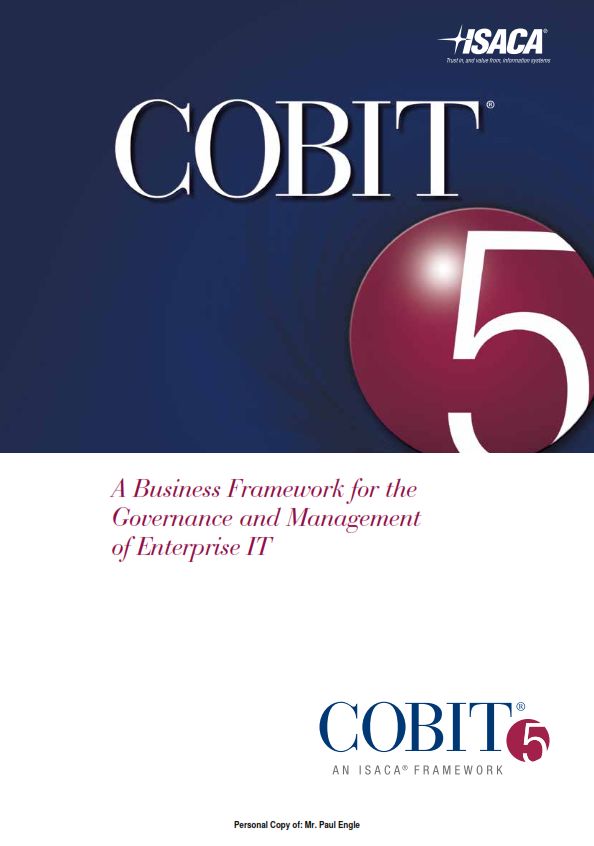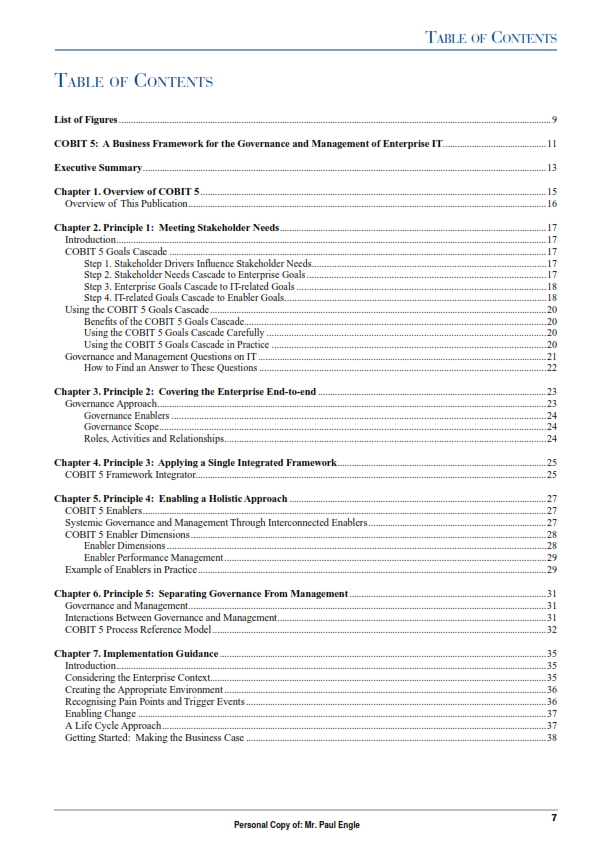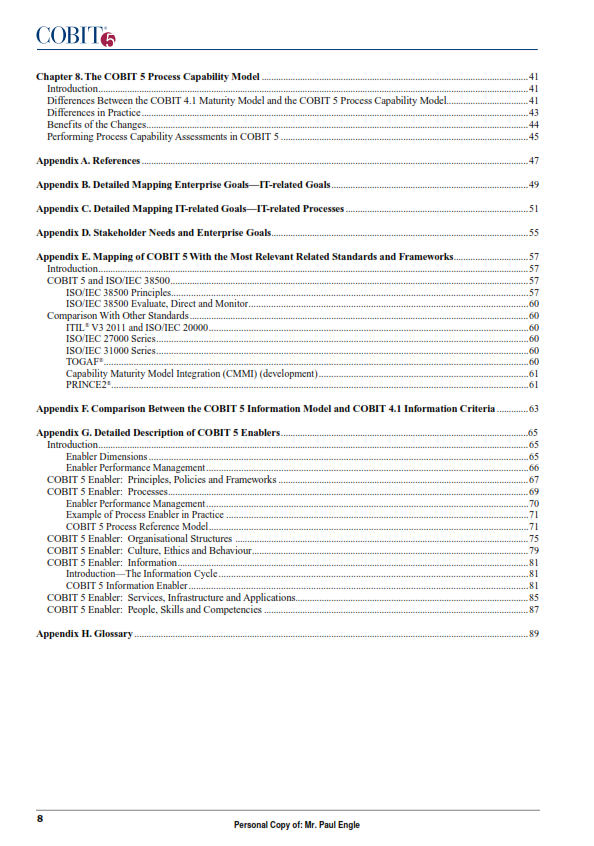
COBIT 5 is the overarching business and management framework for governance and management of enterprise IT. This volume documents the five principles of COBIT 5 and defines the 7 supporting enablers that form the framework. COBIT 5 is the only business framework for the governance and management of enterprise IT. This evolutionary version incorporates the latest thinking in enterprise governance and management techniques, and provides globally accepted principles, analytical tools and models to help increase the trust in, and value from, information systems.
COBIT 5 builds and expands on COBIT 4.1 by integrating other major frameworks, standards and resources, including: ISACA's Val IT and Risk IT Information Technology Infrastructure Library (ITIL). Related standards from the International Organization for Standardization (ISO). COBIT 5 helps enterprises of all sizes: Maintain high-quality information to support business decisions Achieve strategic goals and realize business benefits through the effective and innovative use of IT Achieve operational excellence through reliable, efficient application of technology Maintain IT-related risk at an acceptable level Optimize the cost of IT services and technology. Support compliance with relevant laws, regulations, contractual agreements and policies.





The IT Toolkit has truly revolutionized our IT operations. It's the foundation of our SOPs, helps generate run books, reduces training costs, and boosts user satisfaction.
After implementing the IT Toolkit, we now have a well-organized IT plan that's professional and easy for everyone to access and use.
Our clients have responded positively. Even those who had information, found ours better organized, making us more efficient and improving our IT management.
The toolkit offers a framework for best practices, ensuring that as practices evolve, our documentation system adapts seamlessly.
The IT Toolkit brings structure to documentation management, reducing the workload on engineers so they can focus more on clients. It's a game changer.
The IT Toolkit prevents duplicate entries and has replaced two other tools, making it much more effective and faster. Our engineers love it!
The IT Toolkit is incredibly easy to use with no ramp-up time. It's a straightforward process that gives clients control while simplifying their workflow.
The IT Toolkit has given me a better understanding of IT management efficiency and provides an easy, friendly way to improve our processes.
The toolkit has helped me organize my thoughts and training strategies with our IT team, making everything more streamlined.
Excellent IT Toolkit! It's essential for all CIOs and technology managers looking to enhance their operations.
A very useful toolkit, one of the best I've used. I wish every IT manager could benefit from it.
These toolkits have boosted my confidence and empowered me to grow as an IT Manager.